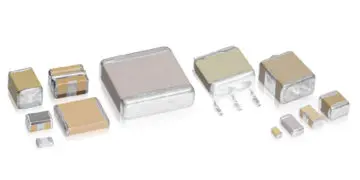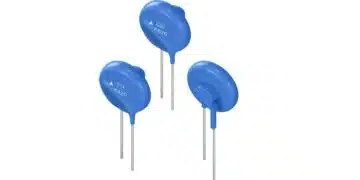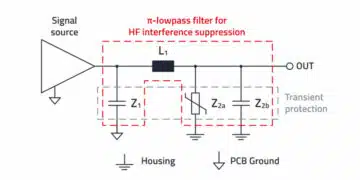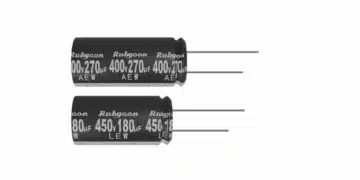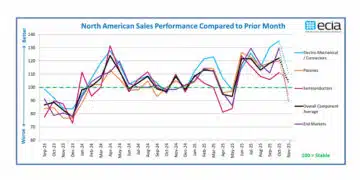Bourns Magnetics Product Line is introducing the new Model HCTSM100304FL and HCTSM150102HL High Clearance / Creepage Distance Isolation Power Transformers.
These high voltage isolation transformers are driven by 3.3 – 5 V input and deliver 3.3 – 15 V up to 350 mA output and can be configured in a variety of turns ratios if needed. The transformers are designed to support isolated interface power for CAN, RS-485, RS-422, RS-232, SPI, I2C, lower power LANs in a range of applications such as Industry 4.0 and most applications that require isolation from potentially hazardous voltages (e.g., from a high voltage battery especially inside a 1500 V Energy Storage System).
The Model HCTSM150102HL is built with a ferrite toroid core for high coupling factor and efficiency. The reinforced isolation, 15 mm minimum clearance/creepage distance and 7.64 kV @ 2 seconds withstanding voltage provide an elevated degree of isolation from high voltage hazards. The Model HCTSM100304FL is also built with a ferrite toroid core for a high coupling factor and efficiency. The reinforced isolation, 8 mm minimum clearance/creepage distance, and 4.2 kV @ 60 seconds withstanding voltage provide an elevated degree of isolation from high voltage hazards.
Both of the transformers are designed for isolation power supplies using Texas Instruments Model SN6501 and SN6505B transformer drivers. The Model HCTSM100304FL is compliant with IEC 60664-1 and IEC 62368-1 standards and the Model HCTSM150102HL is compliant with IEC 60950-1 and IEC 62368-1 standards.
HCTSM100304FL Features
- Low profile (7.5 mm) housing with 10 mm clearance and creepage
- Complies with IEC 60950-1 and IEC 62368-1 standards
- Reinforced insulation for working voltage of 800 V
- Designed for isolation power supplies using TI SN6501 and SN6505B transformer drivers
- RoHS compliant*
HCTSM150102HL Features
- >15 mm clearance and creepage
- Complies with IEC 60664-1 and IEC 62368-1 standards
- Reinforced insulation for working voltage of 1500 V
- Designed for isolation power supplies using TI SN6501 and SN6505B transformer drivers
- Partial discharge test: 2250 Vrms
- UL recognized per UL 62368-1, File No. E515965
- RoHS compliant*
HCTSM100304FL Applications
- RS-485
- CAN Interface Digital Input Module
- RS-232 Isolation
HCTSM150102HL Applications
- RS-485
- CAN Interface Digital Input Module
- RS-232 Isolation


